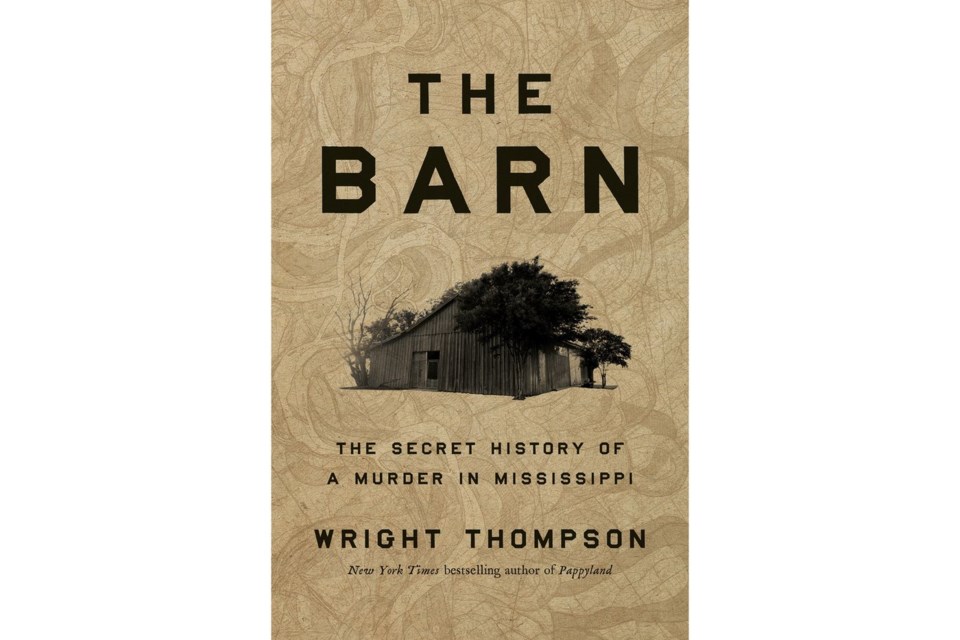ŌĆ£The barnŌĆ” is long and narrow with sliding doors in the middle,ŌĆØ writes in ŌĆśThe Barn: The Secret History of a Murder in Mississippi.ŌĆÖ ŌĆ£Nobody knows when it was built exactly but its cypress-board walls were already weathered in the summer of 1955.ŌĆØ
What happened inside the barn on Aug. 28, 1955, changed history. ItŌĆÖs where a 14-year-old boy was tortured and pistol-whipped for allegedly whistling at a white woman. He was then driven to the nearby Tallahatchie River, where he was shot in the head and a cotton gin fan was tied around his neck with barbed wire to sink the body. The boy, was laid to rest in an open casket at his motherŌĆÖs request, his mutilated face visible to more than 100,000 mourners who paid their respects in Chicago. The image was widely shared in Jet magazine, but withheld from the public by mainstream media outlets. ItŌĆÖs an image that Rosa Parks said years later was on her mind when she refused to give up her seat on an Alabama bus.
Thompson travels back to his native Mississippi (he grew up in Clarksdale, about 30 miles north of Drew, the closest town to the barn) and talks to scores of people, building on the reporting of others to tell TillŌĆÖs story, and using the barn as a jumping off point to explore the racist history of the Mississippi Delta. He traces the barnŌĆÖs land ŌĆö legally identified on maps as Section 2, Township 22 North, Range 4 West ŌĆö from the Native Americans who were driven off it, to the British and American industrialists whose fortunes rose and fell with the price of cotton, to the sharecropping life that impoverished generations of Black farmers. Throughout, he pauses to consider his personal history and the collective effort required to cover up details of TillŌĆÖs story in this countryŌĆÖs stubborn refusal to confront its racist origins.
ItŌĆÖs powerful and unflinching writing. TillŌĆÖs case, while now famous, was not original. White Mississippians killed Blacks indiscriminately and without consequence for decades. The desegregation of schools ordered by the Supreme Court in was mostly ignored, and at least in part helped set in motion TillŌĆÖs killing and the subsequent acquittal of the murderers by a jury of white men. All five candidates for governor that year, writes Thompson, promised to ŌĆ£take any measure to stop the most dangerous and immediate threat to the Mississippi way of life: a Black child who wanted to learn math.ŌĆØ
Thompson does a deep dive into every facet of the story, introducing characters at such a rapid pace that itŌĆÖs often hard to remember whoŌĆÖs who. ThereŌĆÖs a helpful family tree at the beginning that readers will turn back to many times. WhatŌĆÖs unforgettable by the end of ThompsonŌĆÖs book, though, is just how thoroughly this country was built on a belief that some people were worthless and expendable because of the color of their skin.
ThereŌĆÖs a scene early in ŌĆ£The BarnŌĆØ when Thompson meets with Gloria Dickerson, a Black woman who grew up in the Delta, left and built a career, but returned in retirement to run a nonprofit that teaches Delta children their true history. Her charge to those kids is simple. ŌĆ£Remember and do better,ŌĆØ she says. ŌĆ£Remember and make it better.ŌĆØ ItŌĆÖs the work of activists like Dickerson and books like ŌĆ£The BarnŌĆØ that offer some hope that America can heal its oldest and deepest wound.
___
AP book reviews:
Rob Merrill, The Associated Press


